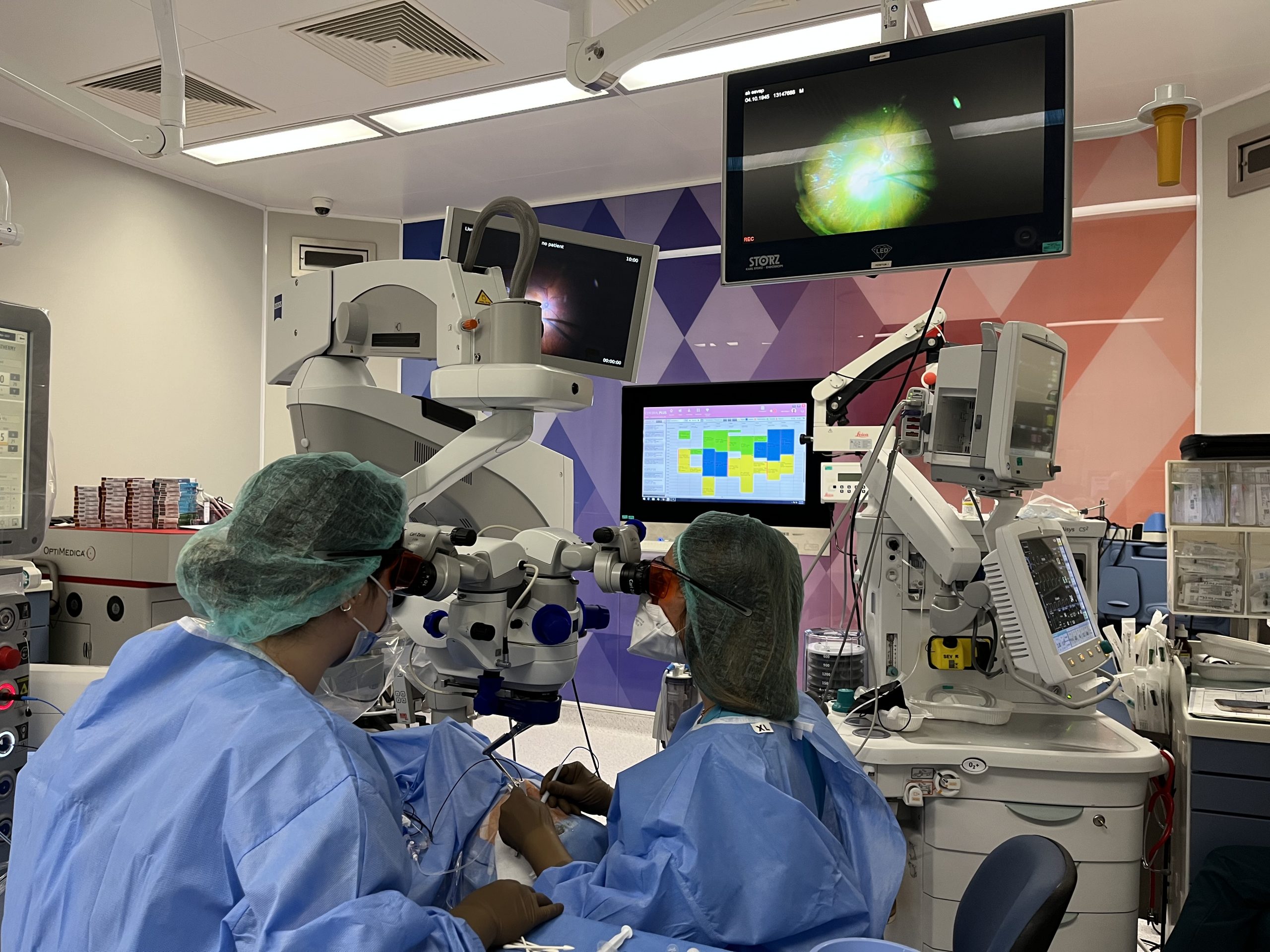“Lense selection should be made according to the needs of the patient” Explaining what is being wondered about multifocal intraocular lenses and other lens types, which have become increasingly popular among the public, Prof. Dr. Nur Acar Göçgil emphasized that the lense selection should be made according to the patient’s personal situation and needs.

Noting that not every patient can be fitted with a multifocal lens, Prof. Dr. Göçgil said, “These lenses cannot be used in cases of uveitis and some diseases affecting the yellow spot. Before cataract surgery, considering the anatomical structure of the eye, health status, and the person’s life and needs, factors such as how the patient spends his day and expectations should be taken into account, and the most suitable lens for each eye should be selected.”
“As the adaptability of our natural lens begins to decline, we need close-up glasses”
Stating that we have achieved an increase in the vision quality of the patients with the application of intraocular lenses, Prof. Dr. Göçgil said, “Our natural lens in our eyes adapts by moving forward or backward in order to perceive different distances more clearly when we look far or close, and allows us to see clearly. This feature works properly until the age of 40, although it differs from person to person after this age, the disorder begins to occur and we need to use close glasses. The patient has cataracts and if surgery is required, we can eliminate this problem to a certain extent thanks to the lenses we place in the eye during the surgery. We can also use refractive and diffractive intraocular lenses to help the patient see at different distances, with the principle of the same multifocal glasses, in order for the patient to experience relief in their far and near vision.”
“Monofocal intraocular lenses are the most commonly used lenses”
Indicating that intraocular lenses are divided into three main groups according to their optical properties, Prof. Dr. Nur Acar Göçgil said, “Toric lenses can be used by adapting to monofocal and multifocal intraocular lenses. Monofocal lenses are the most commonly used lenses today. Lenses that support near and intermediate vision are called multifocal lenses. Multifocal lenses provide two or more focal distances. In these lenses, the primary focus is far, the secondary focus is near, and the tertiary focus is mid-range. These lenses, which have very different optical principles, also have two different optical designs, refractive and diffractive. Today, if the patient’s astigmatism is caused by the cornea, which is the regular and frontmost transparent layer of the eye, astigmatic disorders of 0.75 D and above can be corrected with the application of a toric intraocular lens (T-IOL) during cataract surgery.”
Recording that EDOF, extended dept of focus, intraocular lenses with increased focal depth can provide vision at a distance of 60 cm without deteriorating the patient’s distance vision quality, Prof. Dr. Göçgil said, “For example, the patient can see the text on the big screen or the indicator while driving, but if he/she is going to read a book at 35 cm or closer, he/she feels the need to use a pair of glasses. These lenses with high patient satisfaction are preferred when the use of multifocal and trifocal lenses is not suitable for the patient.”
“The term smart lens is not the right term”
Informing on the trifocal lenses, another lens type that has been increasing in popularity recently, under the name of “smart lens” among the public, Prof. Dr. Göçgil said, “The term smart lens is actually not a correct term. These lenses, which are included in the multifocal lens group, are known as smart lenses among the people and cause scientific misconceptions. Some of our patients refer to it as a method that can be easily inserted and removed, such as contact lenses. These lenses are multifocal lenses that aim to show far, near and intermediate distance. Trifocal lenses offer the patient the capacity to see both near and far objects clearly, depending on the area focused between the regions of the incoming light. Although skills such as the ability to read without glasses vary from person to person, placing these lenses in both eyes usually gives the most positive results. It can take 6-24 weeks for the brain to adapt to the lenses and to improve vision.”
“The choice of lens should be made according to the patient’s personal situation and needs”
Pointing out that the patients that multifocal lenses cannot be placed on every patient, Prof. Dr. Nur Acar Göçgil added further, “For example, it is not recommended to wear multifocal lenses for most people with yellow spot disease. Lense selection should be made carefully according to the patient’s personal situation and needs. These lenses cannot be used in cases of certain diseases such as uveitis and advanced glaucoma. In the selection of the intraocular lens to be used, it is appropriate to inform the patient in detail, to learn the anatomical suitability of the eye, as well as the patient’s expectations and daily activities, and to carefully convey what type of lens they will be satisfied with after the surgery. As a matter of fact, these lenses take the task of our natural lens in our eyes and there is no option to put on and take off daily. Repeated surgeries also carry additional risks.
“It is extremely important that the surgeon is knowledgeable and experienced”
It is also extremely important that the surgeon be knowledgeable and experienced in terms of determining the intraocular lens to be selected. Considering the anatomical structure of the eye, the state of health, and the person’s life and needs, factors such as how the patient spends his day and expectations should be taken into account, and the most suitable lense for each eye should be selected.”



